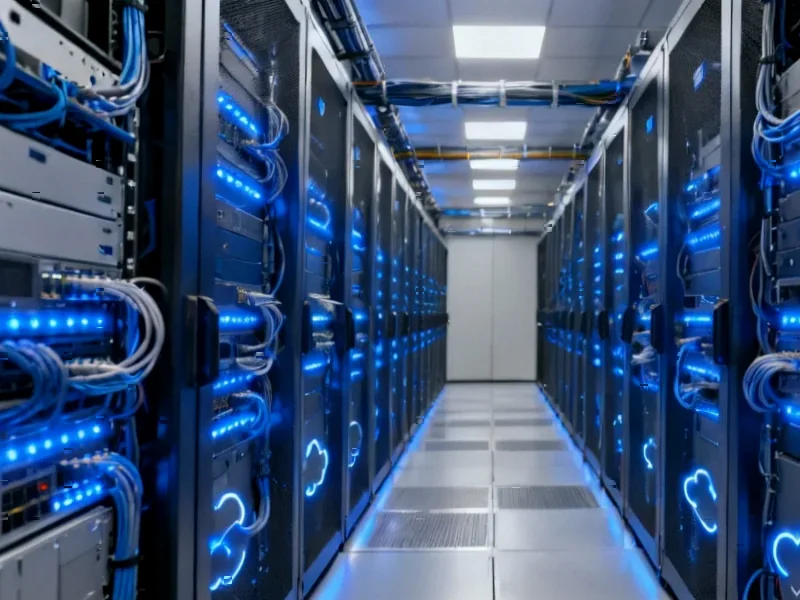According to Forbes, new research from DeepMind and Yale University has created an AI model called C2S-Scale 27B that generates biological hypotheses leading to medical discoveries. Built on Google’s Gemma technology, the system identified mechanisms that allow “cold” tumors to evade immune detection and tested over 4,000 potential drugs using dual-context virtual screening. The AI predicted combinations where two drugs together improved immune recognition by about 50%—something neither achieved alone—with 10-30% of identified drugs being previously unlinked to cancer treatment. This represents a fundamental shift from describing biological phenomena to predicting cellular behavior, potentially saving years of research time through closed-loop learning cycles where AI suggestions are lab-tested and refined.
Table of Contents
From Analysis Engine to Discovery Partner
What makes this development truly revolutionary isn’t just the computational power—it’s the fundamental change in how artificial intelligence participates in scientific discovery. Previous AI systems in biology primarily served as sophisticated pattern recognition tools, helping researchers sift through massive datasets to find correlations. The Yale-DeepMind collaboration represents something fundamentally different: an AI that actively formulates testable hypotheses about biological mechanisms. This transitions AI from being a tool that answers questions to a partner that helps ask better questions—a distinction that could accelerate discovery timelines dramatically across multiple disease areas beyond cancer.
The “Cold Tumor” Problem and Why It Matters
The specific focus on “cold” tumors—those that don’t trigger effective immune responses—targets one of oncology’s most persistent challenges. These neoplasms essentially create immunological blind spots, allowing cancer cells to proliferate undetected by the body’s natural defenses. Traditional approaches have struggled because the mechanisms creating this immune evasion are often complex, multi-factorial, and patient-specific. What’s particularly innovative about this AI approach is its ability to simulate how different immune environments affect drug efficacy—something that’s incredibly difficult to model in traditional lab settings where variables are typically tested in isolation rather than in the complex interplay that characterizes real biological systems.
The Translation Challenge: From Simulation to Clinic
While the laboratory results are promising, the path from AI-predicted combinations to clinically approved therapies faces significant hurdles. Biological systems exhibit tremendous complexity and variability that can’t be fully captured even in sophisticated simulations. Patient-specific factors—including genetic variations, microbiome influences, and concurrent medications—could dramatically alter how these predicted drug combinations perform in real human populations. Additionally, the regulatory pathway for AI-suggested combination therapies presents uncharted territory. Drug approval processes are designed around traditional discovery methods, and regulators will need to develop new frameworks for evaluating therapies whose development rationale comes substantially from AI systems rather than established biological theory.
Beyond Cancer: A New Research Methodology
The implications extend far beyond oncology. This approach establishes a blueprint for how AI can accelerate discovery across multiple complex disease areas. The same methodology could be applied to neurodegenerative diseases, autoimmune conditions, or rare genetic disorders where traditional research has been hampered by biological complexity and limited patient populations. For biologists working in these fields, the ability to rapidly test thousands of virtual combinations before committing resources to laboratory validation could dramatically increase research efficiency. This is particularly valuable for underfunded research areas or rare diseases where traditional drug development economics don’t justify massive screening efforts.
The AI Biology Race Heats Up
The Yale-DeepMind collaboration exists within a rapidly expanding ecosystem of AI-driven biological discovery. As mentioned in the source, MIT and Cellarity’s DrugReflector represents another significant player, with its 17-fold improvement over previous computational methods. What’s emerging is a new research paradigm where organizations like DeepMind provide the computational infrastructure and AI expertise while academic institutions contribute domain knowledge and experimental validation. This division of labor leverages the unique strengths of each sector but also raises important questions about intellectual property, data sharing, and how credit should be allocated in these hybrid discovery processes.
Where This Technology Is Headed
Looking forward, we’re likely to see these systems evolve in two key directions: increased specialization and greater integration with laboratory automation. The next generation of biological AI will probably include disease-specific models trained on deeper, more specialized datasets rather than the general-purpose approach seen in earlier systems. Simultaneously, tighter integration with automated laboratory systems could create truly closed-loop discovery environments where AI predictions directly inform robotic experiments, with results feeding back to refine the models in near real-time. This could eventually lead to AI systems that not only suggest hypotheses but also design and execute the experiments to test them—though human oversight will remain crucial for interpreting results and ensuring scientific rigor.




